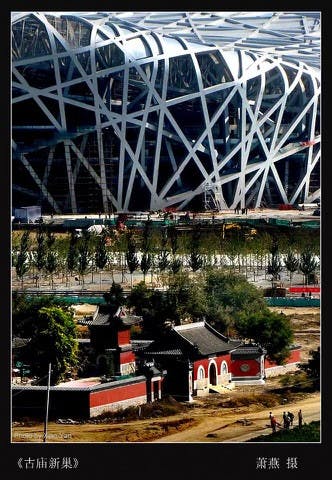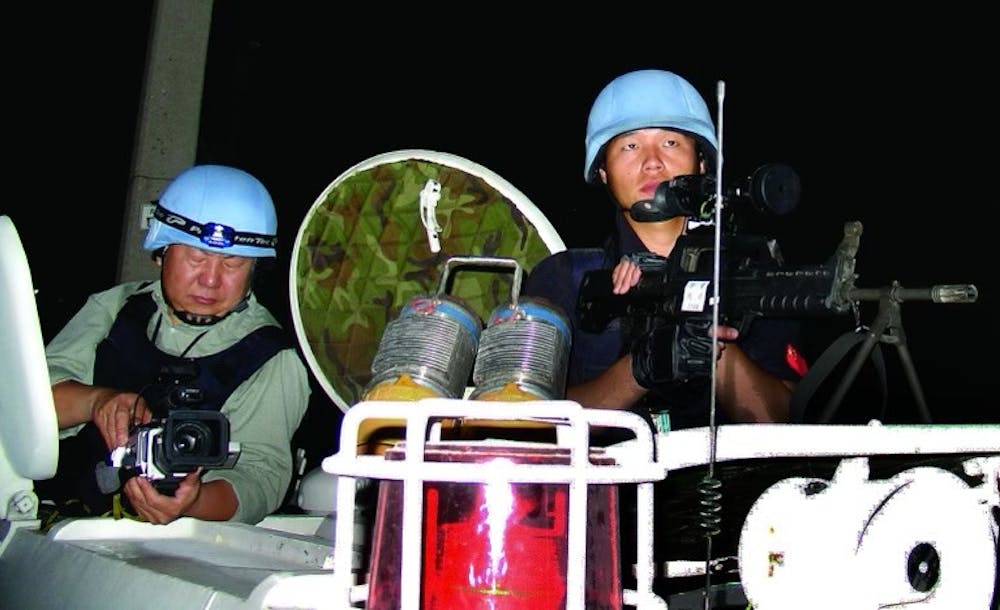“What makes a good photograph is not its beauty… What separates your own unique work from an ordinary photograph is that the viewer will remember it.” Mr. Yan Xiao (pictured left in photo), an award-winning photojournalist currently residing in the West Chester area, stated this as he reflected on his view of life through the lens of the camera.
His photographic journey began as a third grader living in a household with a limited income due to changes caused by the Cultural Revolution in China. Inspired by his older cousin, he first began taking photos using a Dong Fang film camera which his father saved up for bit by bit. Since then, and after immigrating to the United States, he has been recognized for his photography as the winner of the 1996 PSA Gold Medal for Best Photojournalism, as well as the first prize winner for the 1991 City Hall Photography Contest. He has continued to use photography to document the world around him throughout his daily life.
Online, Mr. Yan Xiao goes by the name “Old Gun.” He explained he chose this name because it reflects the essence of his work as a war correspondent during the Iraq War in 2003, illustrating that “his camera is like his gun.”
Without further ado, here are nine tips by Mr. Yan Xiao to better capture the beauty of the world around you — with a camera in hand.
1. Take candid shots
The art of photography is that you can find beauty occurring naturally all around you. You don’t need to set up a scene or pose. You don’t need to spend lots of time preparing. Nature can surprise you — in fact, often the most meaningful photographs are taken candidly as life simply goes about its journey.
Mr. Yan Xiao explains, “Don’t pose for photos — capture these moments as you see them for they may be once in a lifetime
2. Look for contrast
Displaying contrast within the scenery is helpful in drawing the viewer’s attention. Then, by unifying these elements together with a common theme, the photo will look both cohesive and interesting.
Enjoy what you're reading?
Signup for our newsletter

Mr. Yan Xiao captures the comparison between the new architecture of the Beijing Bird Nest and the historical shrine.
Mr. Yan Xiao explains, “Within my photos there are two elements, and though contrasting, they are connected.”
3. Less is more when it comes to naming
“When it comes to naming, the number of words should be minimal; a few characters will take you far,” advises Mr. Yan Xiao, commenting on his 1996 photo Reflection. The photo pictures a U.S. veteran pointing to the name of his comrade on the Vietnam

Veterans Memorial in Washington D.C.
A good name should elevate the viewer’s experience and help the viewer understand what you saw in your photograph. However, it’s important to leave some room for the viewer’s own imagination and interpretation too! Reflection, Mr. Yan Xiao (1996)
4. Capture things that change
Discussing his photograph Distance, 1990 (below), Mr. Yan Xiao commented that he had always wanted to photograph the Philadelphia City Hall, but he recognized that many people have already photographed the building by itself.

However, in Distance, he was able to include a window-wiper moving fast down a neighboring building along with the City Hall in a single raw photograph — making for a much more dynamic and meaningful capture that’s unlikely to come across again. He advises, “Whenever and wherever, record the happenings around you.
5. Don’t rely on Photoshop
Though you may be tempted to alter photos with Photoshop, Mr. Yan Xiao comments on photos created with Photoshop as inferior to genuine photographs. He believes Photoshop is only a tool, not a replacement.
“Photos edited with Photoshop are fake. What you make with Photoshop isn’t real.”
He stated that he believes that a good quality fish will always taste good, no matter how simply you may season it… A bad quality fish, no matter the amount of seasoning you add, will always be bad quality.
6. Photos are history
Recognize photos as history, as they have captured a moment of time to which we can not experience again. Mr. Yan Xiao suggested taking pictures of subjects which change, especially people.
He remarked that, “Today’s photos are tomorrow’s history. Take pictures of people, of old people and of children. (referencing People, Years, and Life by Ilya Ehrenburg) No matter how powerful AI gets, it still will never be able to create history.”
7. Seek beauty right where you are
You don’t have to go far to find interesting or beautiful subjects. In fact, many renowned photojournalists have spent much of their career photographing locally. Below is a photograph taken locally at Valley Forge National Park by Mr. Yan Xiao.
Mr. Yan Xiao suggested, “Discover the beauty which surrounds you, inside and outside your home.” Open your eyes to all of the wonder which resides close by.

Being a photographer or photojournalist means you’re looking for subjects even when you don’t have your camera. You must understand what to look for and what to anticipate. You must imagine — and perhaps then it will become reality.
Commenting on the importance of this skill, Mr. Yan Xiao stated we must, “Take note of your ideas, even if you don’t have a camera at hand, record what you see and store it within you. Then, come opportunity later, you will be able to take the photo.”

Photo taken by Mr. Yan Xiao in Iceland
9. Enrich yourself in the world around you
Lastly, learning photography is not one-dimensional. In order to improve your skills as a photographer you have to gain knowledge of what is happening around you.
To become a better photojournalist, you must first understand the beauty and complexity of the world which surrounds you.
Mr. Yan Xiao shares, “You must learn to appreciate beauty, learn what is good. Learn what things move you.”
*Note: Mr. Yan Xiao’s quotations have been translated from Mandarin to English.




